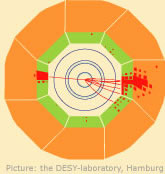The Nobel Prize in Physics 2004
|
| The Nobel Prize in Physics 2004 | |||||||
|
||||||||
|
| Contents: | Introduction – A colourful connection | The Standard Model and the four forces | Inside the proton | The theory shows its true colours | The strong force | A unified theory for all forces? | Timeline | Further reading | Credits | |
|||||||
| Web Adapted Version of the Nobel Poster from the Royal Swedish Academy of Sciences |
Nobel Prizes and laureates
Six prizes were awarded for achievements that have conferred the greatest benefit to humankind. The 12 laureates' work and discoveries range from proteins' structures and machine learning to fighting for a world free of nuclear weapons.
See them all presented here.

